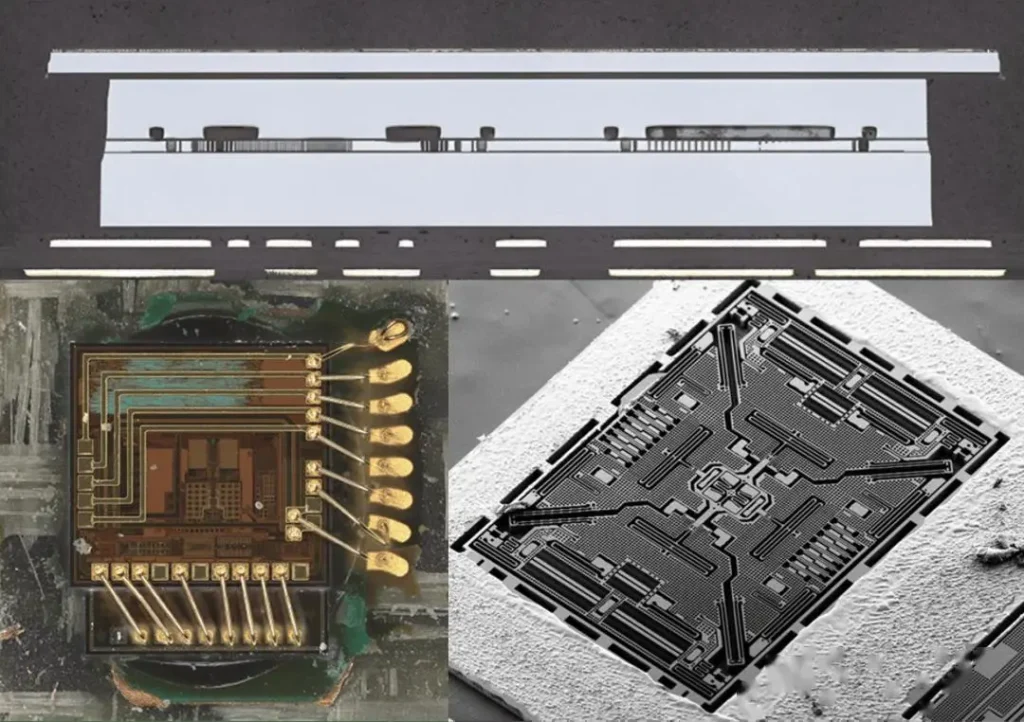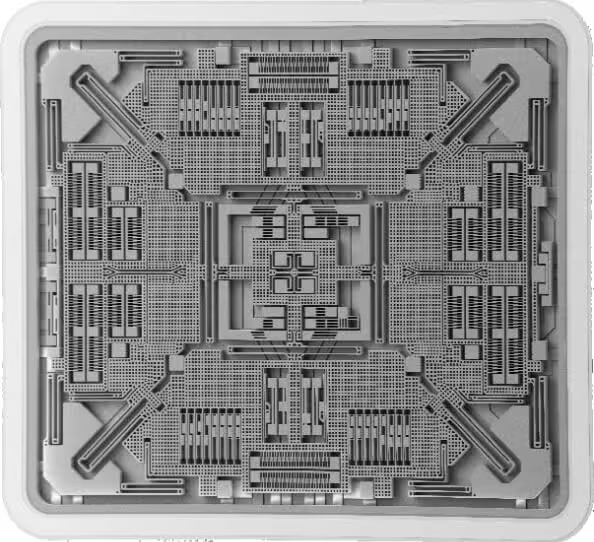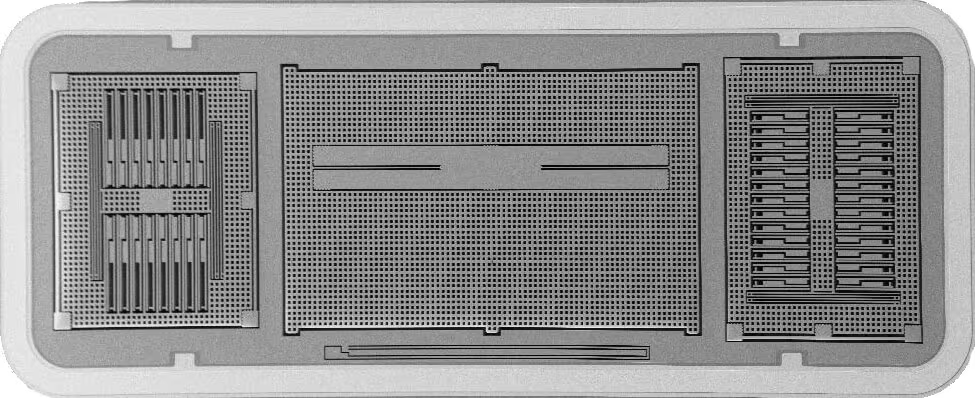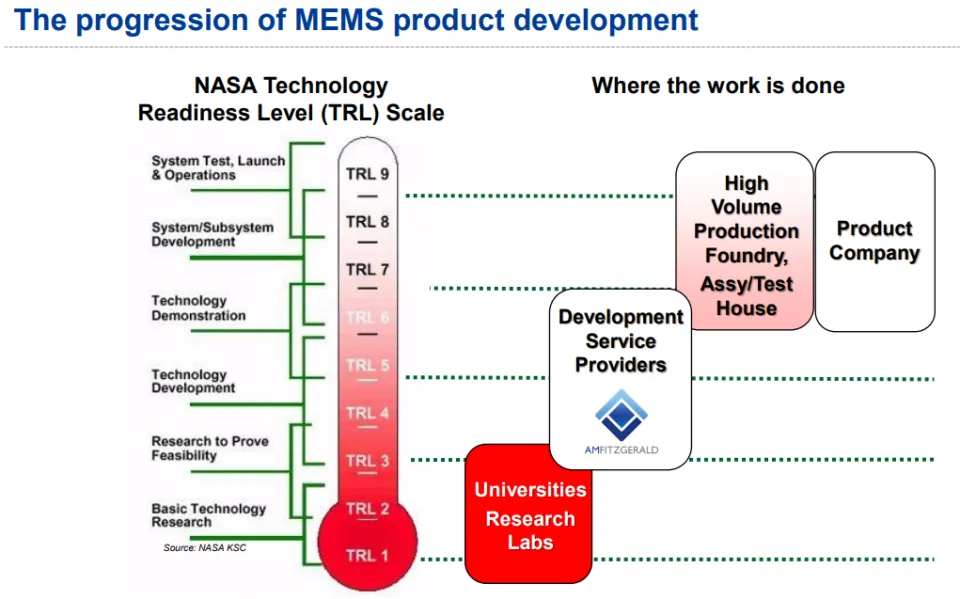MEMS Sensors: From Miniaturization to Intelligence
Introduction: The Miniature Powerhouses Driving Modern Technology
Micro-Electro-Mechanical Systems (MEMS) sensors are emerging as core drivers of modern technology, reshaping consumer electronics, healthcare, industrial automation, and automotive sectors with their miniaturization, high precision, and low power consumption. Thanks to advances in semiconductor manufacturing technology, MEMS sensors have achieved low-cost mass production and are widely implemented in smartphones, wearable devices, and medical diagnostics.
This article provides an engineering perspective on the current state and future trends of MEMS technology, exploring its innovative applications in artificial intelligence, photonics, and self-powered systems, while examining its prospects in the Industry 4.0 and IoT era.
Section 1: Current State of MEMS Sensor Technology and Applications

MEMS sensors are miniature devices that integrate mechanical elements, sensors, actuators, and electronic circuits at the micro to millimeter scale.
Their core is constructed on silicon substrates using microfabrication techniques (such as photolithography, chemical etching, and thin film deposition), enabling the conversion of physical signals (pressure, acceleration, temperature) into electrical signals, which are then processed through integrated circuits for real-time monitoring and control.
Typical Components of MEMS Sensors Include:

- Sensors: Accelerometers, gyroscopes, and pressure sensors for detecting environmental changes
- Actuators: Micro-mirrors and micro-pumps that execute mechanical actions in response to control signals
- Circuits: Components that amplify, filter, and digitize sensor signals, ensuring data reliability
The miniaturized design of MEMS endows them with advantages in low power consumption, high sensitivity, and high integration, making them ideal choices for highly mobile electronic systems. Compared to traditional sensors, MEMS devices are several orders of magnitude smaller while maintaining high precision, with power consumption typically in the microwatt to milliwatt range.
- MEMS sensors originated in the semiconductor industry in the 1980s, initially used as accelerometer triggers for automotive airbags
- Entering the 21st century, the explosive growth of MEMS technology in consumer electronics completely transformed its market landscape
- According to market research, the global MEMS sensor market exceeded $15 billion in 2024 and is expected to continue expanding at a compound annual growth rate of approximately 8% until 2030

Technical Challenges
While MEMS sensors have widespread applications across numerous fields, their further development still faces several technical bottlenecks:
- Manufacturing Complexity: A major challenge due to multi-step microfabrication processes such as deep reactive ion etching, each requiring high-precision control, resulting in low yields and high costs
- Environmental Sensitivity: External factors like temperature, humidity, and vibration can cause sensor drift or failure; for example, MEMS gyroscopes may experience zero-point offset under extreme temperatures
- Calibration and Standardization: The lack of unified industry standards makes it difficult to ensure performance consistency of MEMS devices, limiting cross-manufacturer compatibility
- Noise and Drift: Over time, MEMS sensors may generate electrical noise or signal drift, challenging the long-term reliability requirements in medical and aviation fields
- Chemical Compatibility: The durability limitations of existing materials restrict MEMS applications in corrosive environments, hindering their use in chemical and marine monitoring
These challenges require engineers to continuously innovate in material selection, process optimization, and system integration to improve the performance and reliability of MEMS sensors.
Section 2: Cutting-Edge Trends and Innovations in MEMS Technology
Advances in semiconductor wafer fabrication technology have brought revolutionary changes to MEMS sensors. Advanced lithography techniques (such as extreme ultraviolet lithography, EUV) have reduced feature sizes to sub-micron levels, significantly improving the precision and density of MEMS structures.
Additionally, the popularization of Wafer Level Packaging (WLP) technology has lowered production costs, enabling MEMS devices to achieve small-batch customized production at lower unit prices. For example, Bosch Sensortec, by optimizing wafer-level manufacturing processes, has reduced the cost of MEMS accelerometers to less than $1 per unit, driving their widespread adoption in consumer electronics.
Advanced Materials and Nanoscale Innovation
Traditional MEMS primarily rely on silicon-based materials, but the introduction of graphene, silicon carbide (SiC), and two-dimensional materials (such as MoS2) has brought breakthrough performance improvements:
- Graphene: Its high conductivity and mechanical strength enable MEMS sensors to maintain stability under extreme conditions (high temperature and pressure). Graphene-based MEMS pressure sensors have been tested in aerospace applications with a temperature tolerance range up to 500°C
- Silicon Carbide: SiC’s high hardness and corrosion resistance make it suitable for chemical sensors, extending device lifespan in harsh environments
- Nanotechnology (NEMS): Nano-electromechanical systems, by further reducing MEMS dimensions to the nanoscale, significantly increase sensitivity. For instance, NEMS resonators can detect single-molecule mass changes, opening new pathways for precision medical diagnostics
The manufacturing costs and process complexity of NEMS still keep them primarily at the laboratory stage, with commercialization requiring further breakthroughs.
Self-Powered MEMS Systems
Traditional MEMS sensors rely on external power sources, limiting their applications in remote or power-scarce scenarios. Self-powered MEMS, through energy harvesting technologies (piezoelectric, thermoelectric, or photovoltaic), obtain energy from the environment, fundamentally changing this situation:
- Piezoelectric Mode: Utilizes vibration energy (such as from operating mechanical equipment) to power sensors. STMicroelectronics has developed piezoelectric MEMS sensors that can harvest microwatt-level energy from industrial equipment vibrations, suitable for IoT nodes
- Thermoelectric Mode: Generates electricity through environmental temperature gradients, ideal for medical implant devices such as body temperature-driven heart rate sensors
- Photovoltaic Mode: Micro solar cells can power environmental monitoring sensors, applicable to outdoor air quality detection

Prototypes of self-powered MEMS have demonstrated enormous potential, but improvements are still needed in energy conversion efficiency (typically below 20%) and long-term stability.
AI Integration and Edge Intelligence
Meanwhile, the combination of MEMS sensors with artificial intelligence (AI) and machine learning (ML) is reshaping their application scenarios, especially in automotive and industrial fields.
Through embedded AI chips, MEMS sensors can achieve edge AI, enabling real-time data processing and reducing dependence on cloud computing. For example, in autonomous vehicles, MEMS gyroscopes using edge AI analyze vehicle posture with response times as low as milliseconds.
In industrial equipment, MEMS vibration sensors combined with ML algorithms can predict equipment failure probability, reducing downtime costs. General Electric reports that its MEMS+AI system has reduced maintenance costs by 15%.
Furthermore, AI algorithms can dynamically correct MEMS sensor drift and noise, enhancing long-term reliability.
Optical MEMS and Quantum Applications
The fusion of MEMS with photonics has also given rise to optical MEMS devices such as micro-mirrors and optical switches, which are widely used in optical communication and quantum computing fields.
MEMS micro-mirrors are used for wavelength division multiplexing (WDM) in fiber optic networks, significantly improving data transmission efficiency, while MEMS photonic devices can precisely control photon states, supporting qubit operations. The integration of MEMS with quantum sensors is exploring ultra-high precision applications such as gravitational wave detection and atomic-level navigation, though technology maturity remains relatively low.
Market Dynamics and Competition
The MEMS sensor market presents a highly competitive landscape, with major players including Bosch, STMicroelectronics, Texas Instruments (TI), and TDK InvenSense. These companies maintain cost advantages through vertical integration from design to manufacturing and invest in new materials and AI integration to capture market share.
Chinese manufacturers such as Goertek and AAC Technologies are rapidly rising in the consumer electronics sector, leveraging cost advantages and localized supply chains to secure their positions. These developments collectively drive MEMS technology toward higher performance and broader applications.
To Sum Up: The Intelligent Future of Microscale Technology
MEMS sensors, as technological engines at the microscale, are driving transformation in consumer electronics, healthcare, industrial, and automotive sectors with their high precision, low power consumption, and multifunctional characteristics. From motion detection in smartphones to real-time navigation in autonomous driving, MEMS technology has penetrated every aspect of modern life.
Breakthroughs in new materials, self-powering technology, and AI integration have injected limitless possibilities into the future of MEMS. MEMS sensors will play an increasingly central role in the waves of Industry 4.0 and IoT, with MEMS technology expected to evolve from miniaturization to intelligence, reshaping the global technological landscape.